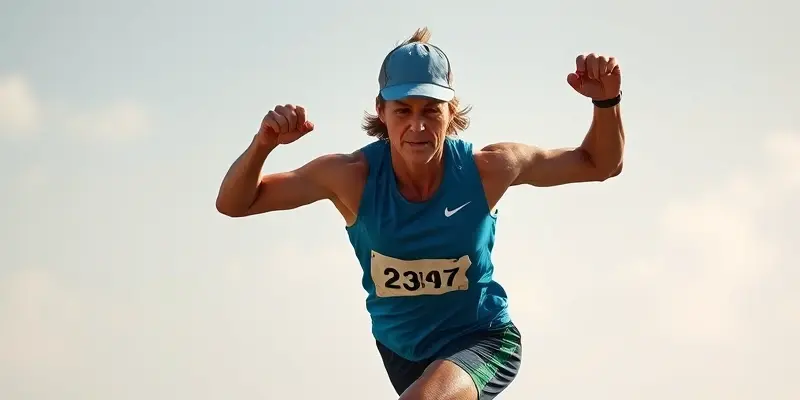Recovery & Injury: Lessons from Billie Jean King for Every Athlete
Whether you’re a weekend jogger or a competitive athlete, injuries can sideline your progress and dampen motivation. But what if you could turn setbacks into comebacks—and use your challenges to drive lasting change, both for yourself and those around you? Let’s explore how the legendary Billie Jean King’s playbook offers modern, science-backed strategies for injury prevention, recovery, and holistic growth.
What Billie Jean King Can Teach Us About Resilience & Recovery
Billie Jean King is best known for her 39 Grand Slam tennis titles and fierce activism for gender equality. But her longevity and success in the game also stemmed from an approach to training and recovery that was ahead of its time. Here’s how you can apply her principles, no matter your fitness level:
Mental & Physical Resilience
King reached at least the semifinals in more than half of her Grand Slam entries—a testament to her physical preparation and mental grit. She focused on:
- Consistent training: Even after setbacks, King adapted her routines to avoid injuries and boost longevity.
- Mindset mastery: She used visualization, goal-setting, and stress management, which today’s sports psychologists back as essential for optimum recovery.
Building Support Networks
King’s early advocacy led her to form groups like the Women’s Tennis Association. For athletes, this translates to:
- Seeking community: Whether you connect with a trainer, join a gym, or find an injury support group, recovery is easier with the right team.
- Accessing expertise: Leverage medical professionals, nutritionists, and experienced peers to personalize your injury prevention and recovery plan.
Advocating for Equity & Resources
King’s quest for equal prize money parallels the modern athlete’s push for access to quality rehab tools and information. Regardless of skill level, demand fair access to:
- Evidence-based recovery programs
- Nutrition and mental health resources
- Educational content tailored to your needs
Your 360° Guide to Preventing & Recovering from Injury
In King’s spirit of combining personal excellence with collective wellness, here’s a toolkit for clean, sustainable recovery.
Common Injuries: Know Your Risks
- Upper body: Tennis elbow, rotator cuff strain (common in racquet sports and weightlifting)
- Lower body: Runner’s knee, Achilles tendonitis (often seen in runners, jumpers, and HIIT fans)
Prevention: Training Smarter
- Warm up and cool down: Essential for prepping muscles and preventing sudden pulls.
- Cross-training: Mixing activities reduces overuse injuries and keeps training engaging.
- Strength and flexibility work: Add targeted exercises (like band work or yoga) to support your sport and everyday movement.
The Recovery Arsenal
- Immediate care: Case of a new strain? Use RICE—Rest, Ice, Compression, Elevation—for initial management.
- Rehab tools: Foam rollers, EMS devices, and wearable tech can help monitor healing. Just avoid over-reliance—science shows best results come when devices support, not replace, professional advice.
- Nutrition for healing: Prioritize protein, vitamins, and anti-inflammatory foods like fatty fish and leafy greens. Also consider antioxidants which are crucial in reducing inflammation and aiding recovery—learn more about antioxidants in sports nutrition.
- Return gradually: Ease back into activity, focusing on form before intensity.
Don’t Overlook Your Mental Game
Research shows injuries can affect motivation and self-worth. Lean on strategies King used:
- Visualization and mindfulness to stay focused during rehab. For deeper insight into this, check out our guide on visualization for healing.
- Connecting with supportive communities—online or in person—for encouragement
Lasting Wellness: Excellence Meets Advocacy
Billie Jean King’s legacy reminds us that strength isn’t just measured by medals—it’s shown in our ability to recover, adapt, and support others along the way. So, next time you face an injury:
- Channel King’s resilience and advocacy.
- Build your dream team—experts, friends, support groups.
- Lean into science-backed recovery, not shortcuts.
Challenge yourself, but don’t go it alone. By combining individual dedication with community and advocacy, you’ll not only bounce back stronger—you’ll help shape a more supportive fitness culture for everyone.
Written by GymPulse’s lead sports performance expert—combining a decade of hands-on experience in injury recovery, nutrition, and athlete wellness.
Ready to start your own legacy of resilience? Join GymPulse Club for more expert tips, community support, and education—because your long-term health is always worth fighting for.

